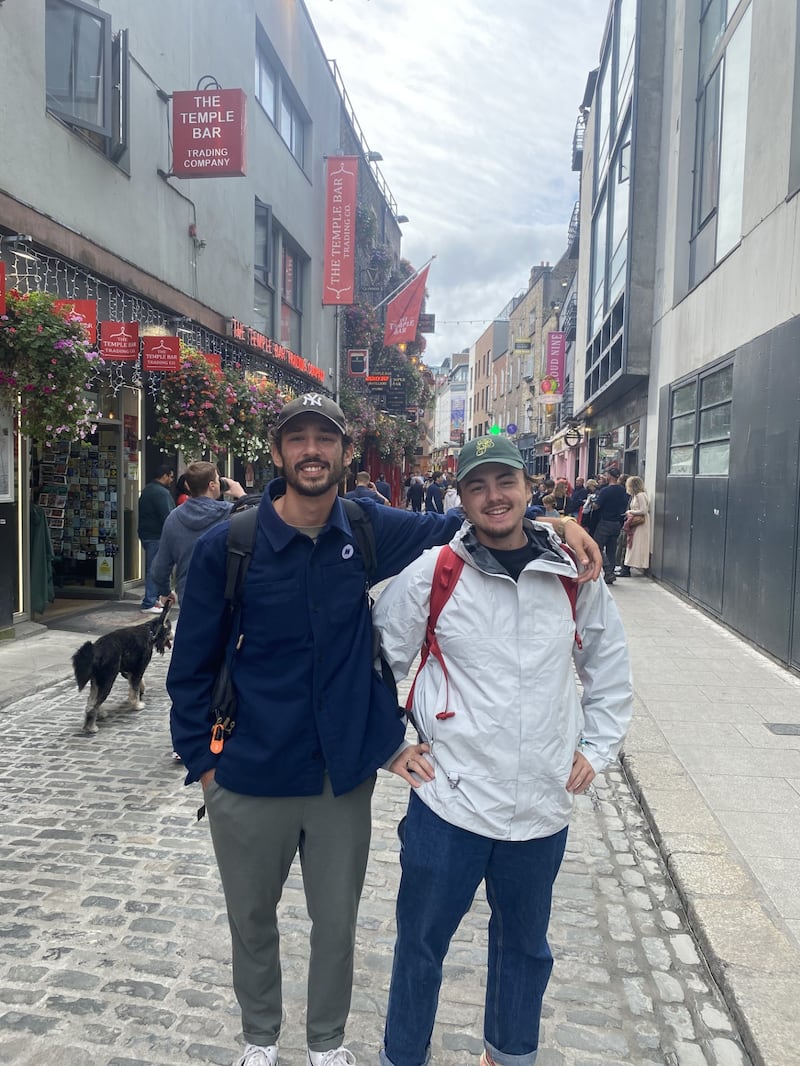Last year, Dublin ranked worst for public transport on a Greenpeace list of 30 European capital cities, based on affordability and simplicity for users in purchasing tickets.
Frustrations often arise around the functionality and inconsistency of public transport in Ireland. From having to purchase a Leap card to navigating erratic schedules, it can be difficult to get a handle on things if it’s your first time in the country.
Still, many tourists adapt to the Irish system quickly. One might expect complaints around the absence of a metro system or a rail line linking the airport to the city, but that is not always the case.
Sheila McIntosh, from British Columbia in Canada, resents the murkiness of Irish timetables. “I just would like to know when the trains and buses are, and how to get around on the metro or whatever it’s called here,” she says.
“[Public transport] is how I would travel but I haven’t been able to find a schedule. I want to use it more, but I don’t know where to get on or what time it is – things like that.”
Cecilia and Bengt Lindoff are visiting Ireland from Sweden with their son Eric. So far, their only experience on public transport has been taking the Dublin Express bus from the airport.
“I took half an hour to understand the buses and the bus system,” Bengt says. “The Leap card or something like that – we are planning to get them.”
Buses tend to elicit the most criticism from travellers for their unpredictable arrival times. Many tourists use the public transport route planner on Google Maps and find it reliable for travelling around Ireland, but the bus schedule is an outlier.
“I have to say, in Milan they are a bit more accurate when it comes to timing,” says Italian Claudio Bux. “You see all the time here you’ve got the table on the screen. Sometimes they do come within the expected time frame; sometimes they don’t. Sometimes you get a totally new number after a few minutes. Maybe that could be improved.”

Magali Servel and Charlene Pellegrini, both travelling from Toulouse, had another issue with the bus, having failed to secure Leap cards on their trip.
“One day, we wanted to take a bus – I think it was a 77a,” Magali says. “We waited for it forever, actually. Besides that, we’ve been taking the bus around the city, and it was great. On Google Maps, we have the times.”
“The only thing I think could be maybe a bit better is that when tickets are bought on the bus, there is no change,” says Magali.
“But €2 for a bus – that’s okay!” adds Charlene.
Usha Flores, a Malaysian woman who lives in Michigan, has had a very positive experience with Irish transport. As is the case for some other American tourists, the lack of high-quality public transport infrastructure at home makes services here seem more impressive.
“I took the train from Galway to Dublin and that was flawless,” Usha says. “That was the best transportation ever. In June I went to Puerto Rico and there is no public transportation there. Ireland is just amazing.
”
Travelling from Washington DC, Mimi Hailu has been attending work meetings at the Convention Centre Dublin while staying in The Alex Hotel on Fenian Street. She noticed a Dublin Bikes station right next to the hotel, and paid €5 for a three-day pass.
“There’s a docking station right there so I noticed it the first day,” she says. “It’s a 20-minute walk and it’s like a five-minute bike ride.
“I’ve been pleasantly surprised. There are signs that show where to cycle – maybe because I look up the route first. So, it brings me to where there are cycle lanes.”
One mode that Ireland is still lacking is an underground metro system. The MetroLink rail line has been a topic of discussion since 2005, and public consultation around its introduction is reopening.
Alex Tam and Jessie Ram are on the second leg of their holiday, having travelled from Hong Kong to Edinburgh to bring their performance group to the fringe festival. Irish transport has been an improvement on the Scottish equivalent.
“I always use the MTR underground,” Jessie says of her routine back home. “In Hong Kong, the traffic on the roads is very busy. There are many cars. I think more traffic jams happen in Hong Kong and it’s better to use the underground to manage your time easier. In Dublin, it’s not as busy. It’s convenient.”
Short journey fares for Luas and Dublin Bus trips rose in June in the first phase of Transport for Ireland’s 2024 fares plan. There remains, however, a €2 cap on Dublin travel within a 90-minute window.
Jeremy Olszewski and Jaime Foley, on holidays from Texas, had no issue with the prices. The pair took a Dart to Howth and accidentally jumped on the wrong train, but made it to their destination with the help of ticket agents.
“It had the sign outside that said it was going to Howth,” Jaime says. “Then we got on and we’re almost positive it said it inside. And then when it went – no.
“By comparison to what we would pay in major cities back home in the States, I would say it’s [very affordable]. We’re in Texas, which has absolutely no public transportation.”

Like plenty of other tourists, Bordeaux natives Kevin Rousseau and Joey Boisdy navigated public transport in Dublin without a Leap card. Naturally, that makes things more expensive, although they had few complaints overall.
“For me, it was a positive experience,” Kevin says. “It was clean, it was pretty fast, and it’s organised. We found out where to go, how to go. It was well described and well indicated. It was on time.
“We didn’t know when we took the bus that [the Leap card] exists,” Kevin says. “When we went on the bus, we paid in cash. It’s maybe a little expensive. €4 to go to the Phoenix Park from around [Temple Bar]. In comparison with our country in France, it would be like €1 or €2.”
Those that do spring for a Leap card reap the benefits. Marcin and Joanna Jedryka are visiting Dublin from Poland, and they seem to have grasped the system quite quickly.
“It’s convenient,” Marcin says of the Leap card. “[In Warsaw], there are public cards also which you can use. But you can also use single tickets and mobile apps.”
- Sign up for push alerts and have the best news, analysis and comment delivered directly to your phone
- Join The Irish Times on WhatsApp and stay up to date
- Listen to our Inside Politics podcast for the best political chat and analysis












